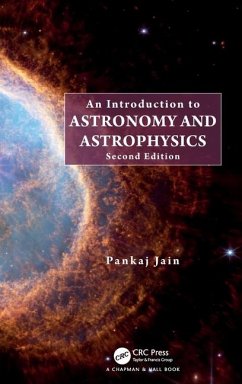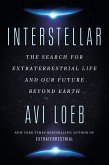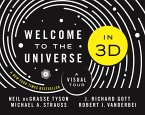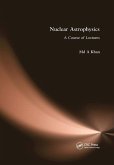Astronomy is the field of science devoted to the study of astronomical objects, such as stars, galaxies, and nebulae. Astronomers have gathered a wealth of knowledge about the universe through hundreds of years of painstaking observations. These observations are interpreted by the use of physical and chemical laws familiar to mankind. These interpretations supply information about the nature of these astronomical objects, allowing for the deduction of their surface and interior conditions. The science associated with these interpretations is called astrophysics.
An Introduction to Astronomy and Astrophysics offers a comprehensive introduction to astronomy and astrophysics, complete with illustrative examples and illuminating homework problems. Requiring a familiarity with basic physics and mathematics, this undergraduate-level textbook:
Addresses key physics concepts relevant to stellar observations, including radiation, electromagnetic spectrum, photometry, continuous and discrete spectrum, and spectral lines.Describes instruments used for astronomical observations as well as how the radiation received is characterized and interpreted to determine the properties of stars.Examines the structure of stars, the basic equations that explain stars in equilibrium, and the fusion reactions occurring in stellar cores.Discusses the evolution of stars, the solar system, the dynamics of galaxies, and the fundamentals of modern cosmology.Explores the universe at high redshifts, where it is dominated by objects such as active galaxies.
An Introduction to Astronomy and Astrophysics teaches students how to interpret the night sky, providing them with a critical understanding of the stars and sun, solar system, extrasolar planets, stars, and galaxies.
The book is thoroughly revised to make it an essential textbook for students. The Second edition introduces the following changes:
New solutions are provided at the end of all the chapters.The number of problems has increased.Major chapters have been considerably revised and new developments in this field have been introduced.
An Introduction to Astronomy and Astrophysics offers a comprehensive introduction to astronomy and astrophysics, complete with illustrative examples and illuminating homework problems. Requiring a familiarity with basic physics and mathematics, this undergraduate-level textbook:
Addresses key physics concepts relevant to stellar observations, including radiation, electromagnetic spectrum, photometry, continuous and discrete spectrum, and spectral lines.Describes instruments used for astronomical observations as well as how the radiation received is characterized and interpreted to determine the properties of stars.Examines the structure of stars, the basic equations that explain stars in equilibrium, and the fusion reactions occurring in stellar cores.Discusses the evolution of stars, the solar system, the dynamics of galaxies, and the fundamentals of modern cosmology.Explores the universe at high redshifts, where it is dominated by objects such as active galaxies.
An Introduction to Astronomy and Astrophysics teaches students how to interpret the night sky, providing them with a critical understanding of the stars and sun, solar system, extrasolar planets, stars, and galaxies.
The book is thoroughly revised to make it an essential textbook for students. The Second edition introduces the following changes:
New solutions are provided at the end of all the chapters.The number of problems has increased.Major chapters have been considerably revised and new developments in this field have been introduced.








